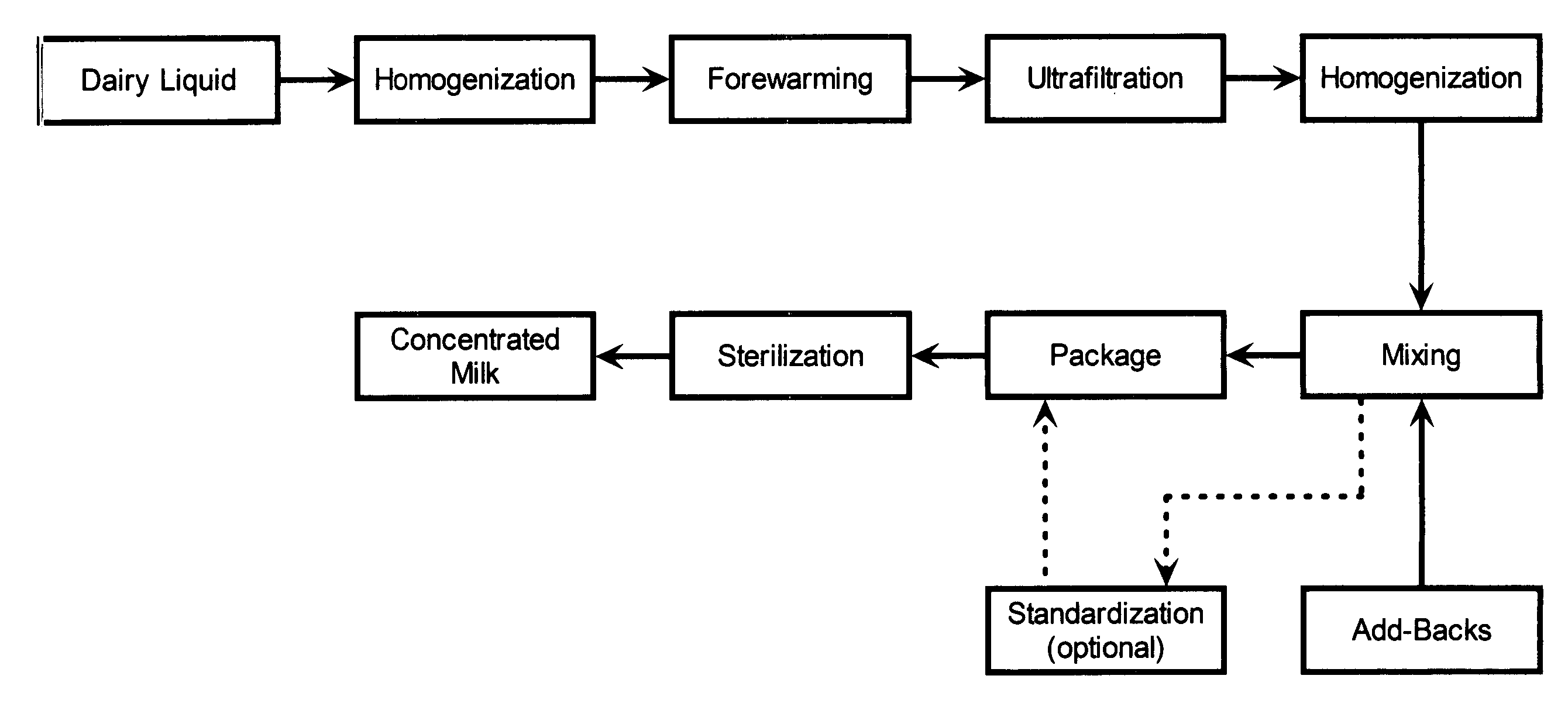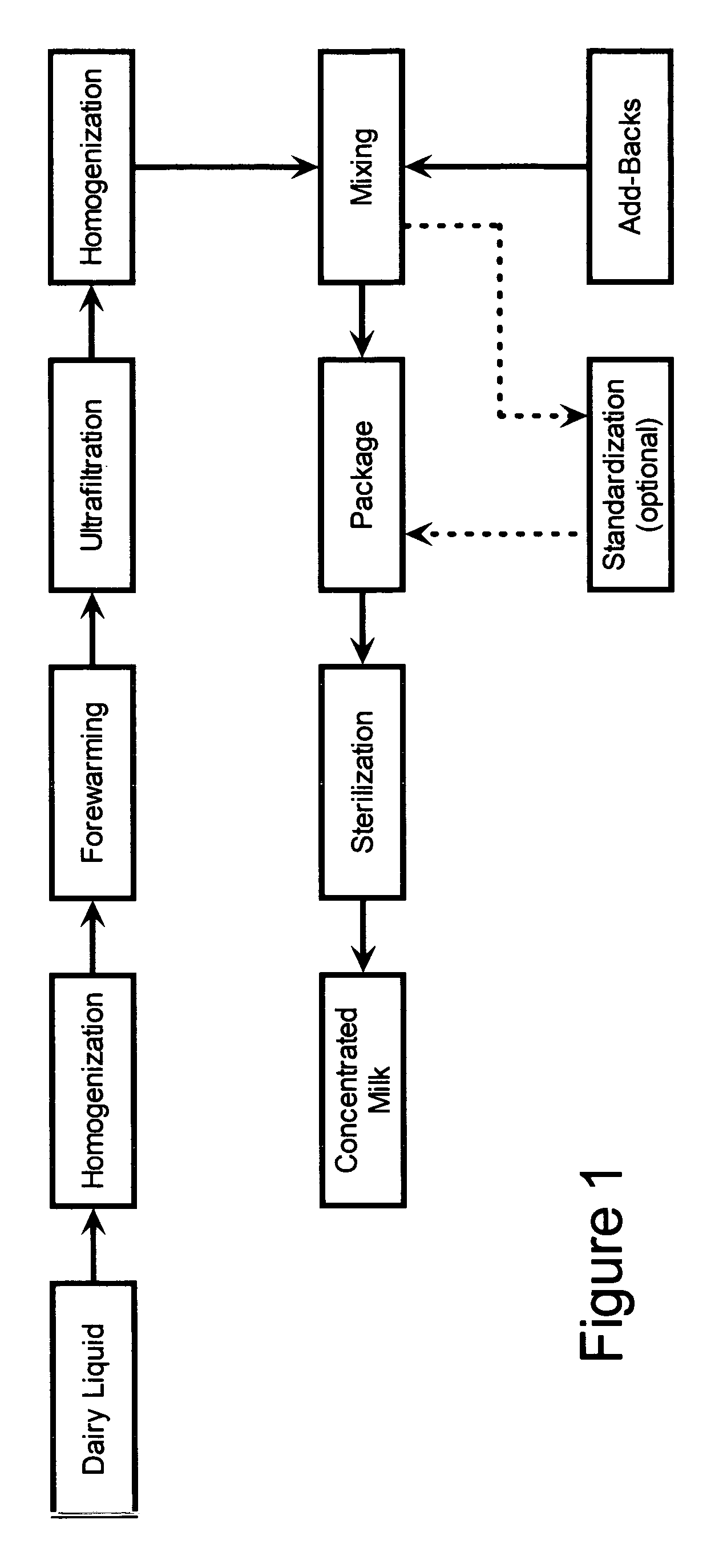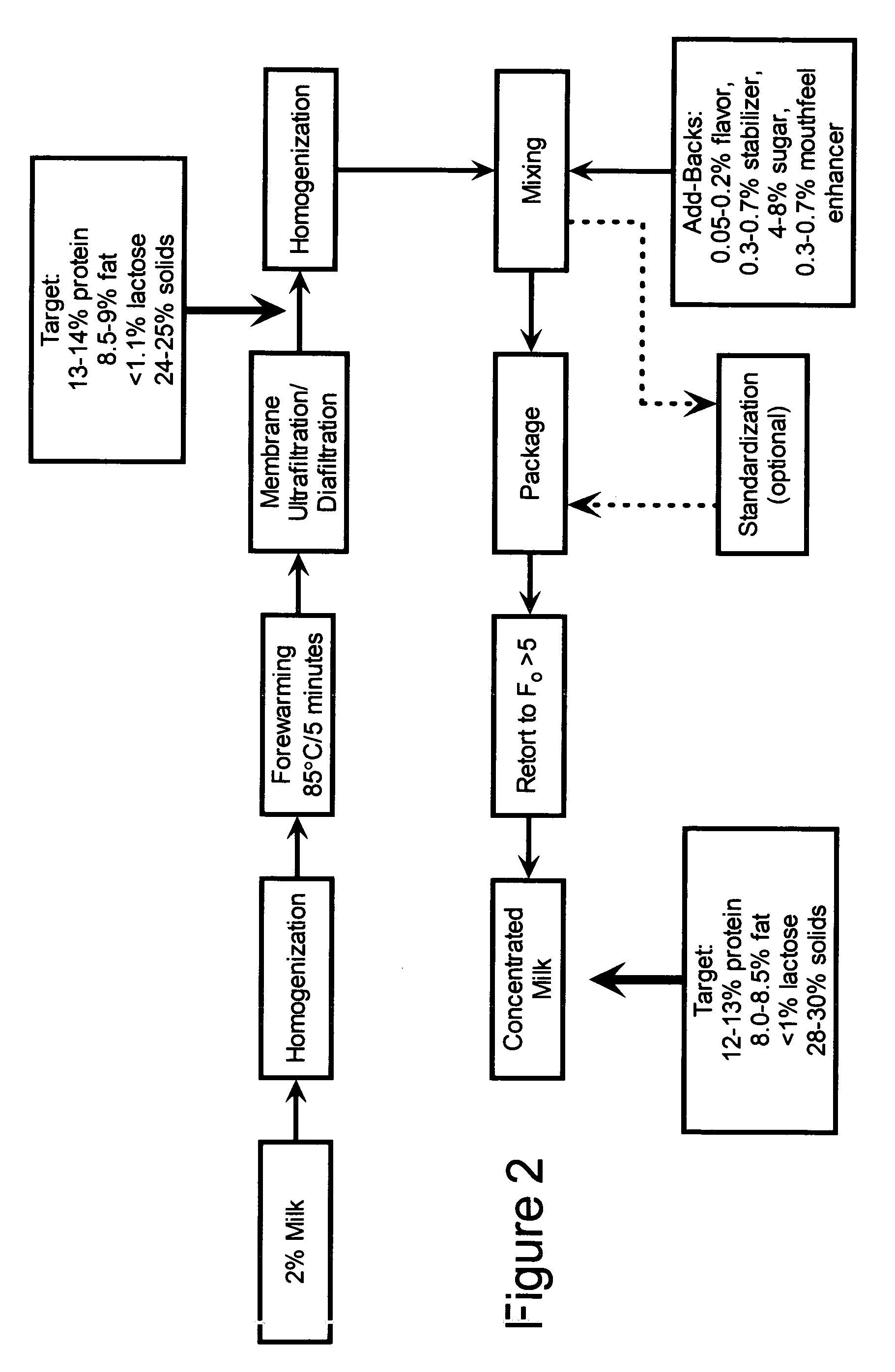Heat-stable concentrated milk product
a concentrated, heat-stable technology, applied in the field of concentrated dairy products, can solve the problems of unsightly brown color, unsatisfactory gelation and browning, color change and/or gelation during the production process, etc., and achieve the effect of increasing the volume of milk
- Summary
- Abstract
- Description
- Claims
- Application Information
AI Technical Summary
Benefits of technology
Problems solved by technology
Method used
Image
Examples
example 1
[0061] This example illustrates the preparation of 4.5× milk using the process of this invention. Three concentrated milks products were prepared according to the formulas described in Table 1. Inventive Samples 1 and 2 represent examples of the present invention and are compared to a comparison sample.
[0062] All inventive products and the comparison product were prepared using same batch of concentrated 2% milk. The reduced fat milk was forewarmed by heating to 88° C. for about 5 minutes (pH soluble protein reduced by greater than about 50 percent) and then concentrated to provide a 4.5× concentrate product using ultrafiltration with diafiltration. The membrane filtration was conducted at 120° F. and 40-60 psig. The membrane filtration system used was a polysulfone membrane pore sized to provide about a 10,000 MW cutoff. The fresh 2% milk was produced with 200 lbs being concentrated to 4.5× in 5 hours with about 80 pounds diafiltration water added during this time.
[0063] After ul...
example 2
[0067] Experiments similar to Example 1 were carried out using different levels of the stabilizers and mouthfeel enhancers. All inventive products and the comparison product were prepared using the same batch of concentrated 2% milk and the same techniques as described in Example 1 (i.e., reduced fat milk was forewarmed by heating to 88° C. for about 5 minutes and then concentrated to provide a 4.5× concentrate product using ultrafiltration / diafiltration). The pH 4.6 soluble protein was reduced by about 70 percent during the forewarming step.
[0068] Stabilizers and mouthfeel enhancers were added to Inventive Samples 2 to 7 in Table 2 before packaging and retorting. The comparison milk product 1 represented a milk concentrate without added stabilizer or mouthfeel enhancer. All samples were packaged in 350 mL glass bottles and retorted under the temperature and time conditions as described in Example 1. All samples had more than about 10 percent protein.
[0069] Organoleptic evaluation...
example 3
[0070] Additional experiments similar to Example 2 were also carried out using different stabilizer and / or mouthfeel enhancers. All inventive products and the comparison product were prepared using the same batch of concentrated 2% milk and the same techniques as described in Example 1 (i.e., reduced fat milk was forewarmed by heating to 88° C. for about 5 minutes and then concentrated to provide a 4.5× concentrate product using ultrafiltration / diafiltration). The pH 4.6 soluble protein was reduced by about 70 percent during the forewarming step.
[0071] Stabilizers and mouthfeel enhancers were added to Inventive Samples 2 to 7 in Table 3 before packaging and retorting. The comparison milk product 1 represented a milk concentrate without added stabilizer or mouthfeel enhancer. All samples were packaged in 350 mL glass bottles and retorted under the temperature and time conditions as described in Example 1. All samples had more than about 10 percent protein.
[0072] Organoleptic evalua...
PUM
 Login to View More
Login to View More Abstract
Description
Claims
Application Information
 Login to View More
Login to View More - R&D
- Intellectual Property
- Life Sciences
- Materials
- Tech Scout
- Unparalleled Data Quality
- Higher Quality Content
- 60% Fewer Hallucinations
Browse by: Latest US Patents, China's latest patents, Technical Efficacy Thesaurus, Application Domain, Technology Topic, Popular Technical Reports.
© 2025 PatSnap. All rights reserved.Legal|Privacy policy|Modern Slavery Act Transparency Statement|Sitemap|About US| Contact US: help@patsnap.com



